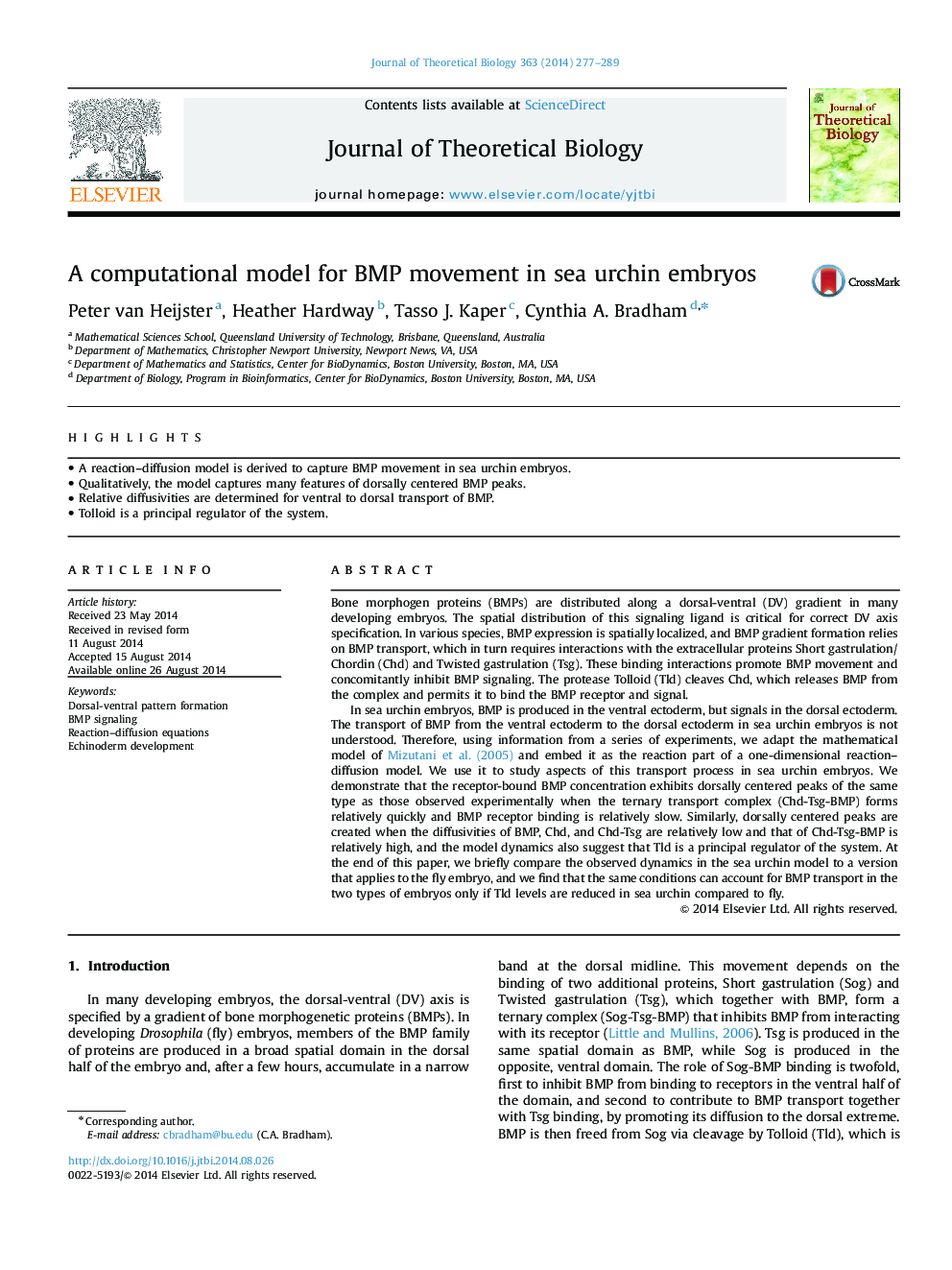| Article ID | Journal | Published Year | Pages | File Type |
|---|---|---|---|---|
| 6370227 | Journal of Theoretical Biology | 2014 | 13 Pages |
Abstract
In sea urchin embryos, BMP is produced in the ventral ectoderm, but signals in the dorsal ectoderm. The transport of BMP from the ventral ectoderm to the dorsal ectoderm in sea urchin embryos is not understood. Therefore, using information from a series of experiments, we adapt the mathematical model of Mizutani et al. (2005) and embed it as the reaction part of a one-dimensional reaction-diffusion model. We use it to study aspects of this transport process in sea urchin embryos. We demonstrate that the receptor-bound BMP concentration exhibits dorsally centered peaks of the same type as those observed experimentally when the ternary transport complex (Chd-Tsg-BMP) forms relatively quickly and BMP receptor binding is relatively slow. Similarly, dorsally centered peaks are created when the diffusivities of BMP, Chd, and Chd-Tsg are relatively low and that of Chd-Tsg-BMP is relatively high, and the model dynamics also suggest that Tld is a principal regulator of the system. At the end of this paper, we briefly compare the observed dynamics in the sea urchin model to a version that applies to the fly embryo, and we find that the same conditions can account for BMP transport in the two types of embryos only if Tld levels are reduced in sea urchin compared to fly.
Related Topics
Life Sciences
Agricultural and Biological Sciences
Agricultural and Biological Sciences (General)
Authors
Peter van Heijster, Heather Hardway, Tasso J. Kaper, Cynthia A. Bradham,
